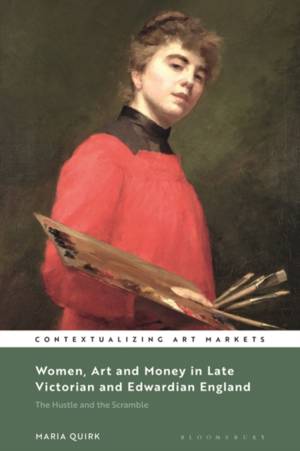
Bedankt voor het vertrouwen het afgelopen jaar! Om jou te bedanken bieden we GRATIS verzending (in België) aan op alles gedurende de hele maand januari.
- Afhalen na 1 uur in een winkel met voorraad
- In januari gratis thuislevering in België
- Ruim aanbod met 7 miljoen producten
Bedankt voor het vertrouwen het afgelopen jaar! Om jou te bedanken bieden we GRATIS verzending (in België) aan op alles gedurende de hele maand januari.
- Afhalen na 1 uur in een winkel met voorraad
- In januari gratis thuislevering in België
- Ruim aanbod met 7 miljoen producten
Zoeken
€ 254,45
+ 508 punten
Uitvoering
Omschrijving
Women, Art and Money in England establishes the importance of women artists' commercial dealings to their professional identities and reputations in the late nineteenth and early twentieth centuries. Grounded in economic, social and art history, the book draws on and synthesises data from a broad range of documentary and archival sources to present a comprehensive history of women artists' professional status and business relationships within the complex and changing art market of late-Victorian England.
By providing new insights into the routines and incomes of women artists, and the spaces where they created, exhibited and sold their art, this book challenges established ideas about what women had to do to be considered 'professional' artists. More important than a Royal Academy education or membership to exhibiting societies was a woman's ability to sell her work. This meant that women had strong incentive to paint in saleable, popular and 'middlebrow' genres, which reinforced prejudices towards women's 'naturally' inferior artistic ability - prejudices that continued far into the twentieth century.
From shining a light on the difficult to trace pecuniary arrangements of little researched artists like Ethel Mortlock to offering new and direct comparisons between the incomes earned by male and female artists, and the genres, commissions and exhibitions that earned women the most money, Women, Art and Money is a timely contribution to the history of women's working lives that is relevant to a number of scholarly disciplines.
By providing new insights into the routines and incomes of women artists, and the spaces where they created, exhibited and sold their art, this book challenges established ideas about what women had to do to be considered 'professional' artists. More important than a Royal Academy education or membership to exhibiting societies was a woman's ability to sell her work. This meant that women had strong incentive to paint in saleable, popular and 'middlebrow' genres, which reinforced prejudices towards women's 'naturally' inferior artistic ability - prejudices that continued far into the twentieth century.
From shining a light on the difficult to trace pecuniary arrangements of little researched artists like Ethel Mortlock to offering new and direct comparisons between the incomes earned by male and female artists, and the genres, commissions and exhibitions that earned women the most money, Women, Art and Money is a timely contribution to the history of women's working lives that is relevant to a number of scholarly disciplines.
Specificaties
Betrokkenen
- Auteur(s):
- Uitgeverij:
Inhoud
- Aantal bladzijden:
- 248
- Taal:
- Engels
- Reeks:
Eigenschappen
- Productcode (EAN):
- 9781501343056
- Verschijningsdatum:
- 16/05/2019
- Uitvoering:
- Hardcover
- Formaat:
- Genaaid
- Afmetingen:
- 157 mm x 231 mm
- Gewicht:
- 544 g

Alleen bij Standaard Boekhandel
+ 508 punten op je klantenkaart van Standaard Boekhandel
Beoordelingen
We publiceren alleen reviews die voldoen aan de voorwaarden voor reviews. Bekijk onze voorwaarden voor reviews.









